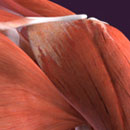|
Source: NORML & NORML Foundation 線維筋痛症 は原因不明の慢性痛で、痛みは筋骨格に沿って広い範囲に見られ、疲労しやすく、首や背骨、肩、腰などのあちこちに圧痛点が見られるのが特徴になっている。アメリカでは、300〜600万人が線維筋痛症に苦しんでいると言われているが、標準的な痛みの治療法では効果が得られないことも多い。 線維筋痛症の患者たちはしばしば、症状に対処するためにカナビスを治療的使っていると証言している[1-2] ほか、医療カナビスが合法化されている州の医者たちも筋骨格疾患の治療としてカナビスの利用を推奨している[3-4]。 しかしながら、現在までのところでは、線維筋痛症の治療にカナビノイドを使った臨床研究としては、科学文献検索では1件だけしか見つからない。 最新医学研究&オピニオン・ジャーナルの2006年7月号で、ドイツのハイデルベルグ大学の研究者テームが、9人の線維筋痛症患者に対して経口THCを3ヶ月間処方して鎮痛効果を調べている。被験者たちには他の薬は与えないで、THCのみを1日あたり2.5〜15mg投与して、本来の痛みと電気的に引き起こした痛みについて毎日の変化を記録したところ、最後まで実験に残った患者については、全員が著しい緩和効果を示した[5]。 以前に行われた臨床および臨床前研究では、天然のカナビスと エンドカナビノイド の双方で鎮痛効果が確かめられており[6-9]、特に従来のオピオイド治療で十分な効果の見られない ガンの痛み [10] や 神経性疼痛 [11-13] に対して効果のあることが報告されている。 こうした結果から、一部の専門家たちは、線維筋痛症などのオピオイドが効かない慢性痛の治療についてカナビノイド・アゴニストを治療へ応用することを提案している。また、エンドカナビノイド・システムに臨床的欠陥(Clinical Endocannabinoid Deficiency)のあることが病気と関係しているのではないかという指摘もある[14]。 |






[1] Swift et al. 2005. Survey of Australians using cannabis for medical purposes. Harm Reduction Journal 4: 2-18.
[2] Ware et al. 2005. The medicinal use of cannabis in the UK: results of a nationwide survey. International Journal of Clinical Practice 59: 291-295.
[3] Dale Gieringer. 2001. Medical use of cannabis: experience in California. In: Grotenhermen and Russo (Eds). Cannabis and Cannabinoids: Pharmacology, Toxicology, and Therapeutic Potential. New York: Haworth Press: 153-170.
[4] Gorter et al. 2005. Medical use of cannabis in the Netherlands. Neurology 64: 917-919.
[5] Schley et al. 2006. Delta-9-THC based monotherapy in fibromyalgia patients on experimentally induced pain, axon reflex flare, and pain relief. Current Medical Research and Opinion 22: 1269-1276.
[6] Burns and Ineck. 2006. Cannabinoid analgesia as a potential new therapeutic option in the treatment of chronic pain. The Annals of Pharmacotherapy 40: 251-260.
[7] David Secko. 2005. Analgesia through endogenous cannabinoids. CMAJ 173:
[8] Wallace et al. 2007. Dose-dependent effects of smoked cannabis on capsaicin-induced pain and hyperalgesia in healthy volunteers. Anesthesiology 107:785-96.
[9] Cox et al. 2007. Synergy between delta9-tetrahydrocannabinol and morphine in the arthritic rat. European Journal of Pharmacology 567: 125-130.
[10] Radbruch and Elsner. 2005. Emerging analgesics in cancer pain management. Expert Opinion on Emerging Drugs 10: 151-171.
[11] Notcutt et al. 2004. Initial experiences with medicinal extracts of cannabis for chronic pain: Results from 34 'N of 1' studies. Anaesthesia 59: 440.
[12] Abrams et al. 2007. Cannabis in painful HIV-associated sensory neuropathy: a randomized placebo-controlled trial. Neurology: 68: 515-521.
[13] Rog et al. 2007. Oromucosal delta-9-tetrahydrocannabinol/cannabidiol for neuropathic pain associated with multiple sclerosis: an uncontrolled, open-label, 2-year extension trial. Clinical Therapeutics 29: 2068-2079.
[14] Ethan Russo. 2004. Clinical Endocannabinoid deficiency (CECD): Can this concept explain therapeutic benefits of cannabis in migraine, fibromyalgia, irritable bowel syndrome, and other treatment-resistant conditions? Neuroendocrinology Letters 25: 31-39.